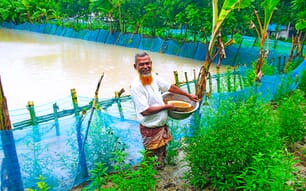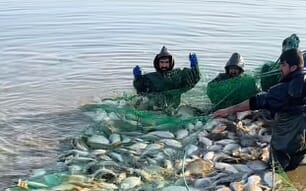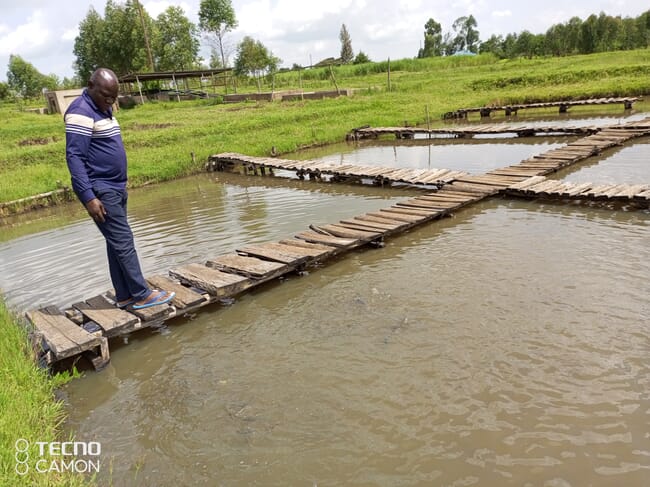
Kings Beta Fish Farm Limited was established in 2015 with the sole objective of acting as a farmers resource centre for dissemination of knowledge, skills and technologies in fish farming
How long have you been farming for?
Just over six years, I started Kings Beta in 2015.
Why did you decide to embark on a career in aquaculture?
Both to generate income and employment. Also for the nutritional value of aquaculture products – a value that has made demand skyrocket.
What size is your farm and what species do you produce?
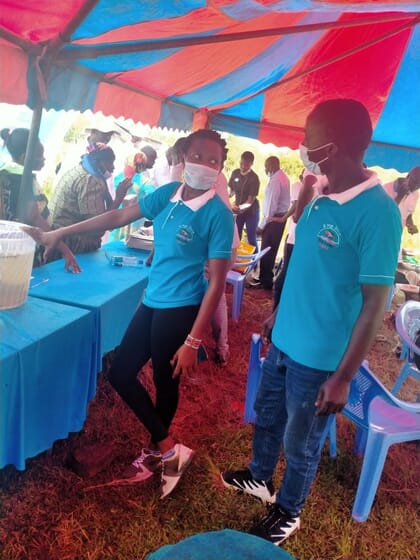
Amolloh employs 10 people permanently and hosts casual labourers as well
We produce tilapia and catfish fingerlings, and also farm fish to maturity for sales at 500 to 700 g for tilapia and 250 to 500 g for catfish. Our ponds cover more than 14 acres: we have a total of 22 big ponds, out of which, 12 are used to rear tilapia and the remaining 10 for catfish. We also have nine additional smaller ponds which we use as hatchery and nursery capacities. We employ 10 people permanently, as well as many casual labourers.
What sort of production system do you operate?
We produce fish in earthen ponds, stocking four 4 g fry per m³ for tilapia or 10 catfish fingerlings per m³. In time we hope to introduce RAS and aerators to maximise our production in the existing pond space.
How is the farm evolving and what changes would you most like to make?
We started with one pond, holding up to 1,000 fish and now have 22 ponds, holding up to 22,000 fish at a time.
We currently harvest 1,000 mature tilapia at 600 g per month, which equates to 7,200 kg of tilapia. We also harvest 2,000 catfish per month at 500 g each, which equates to 12 tonnes of catfish. In terms of fingerlings, monthly production stands 300,000 tilapia fingerlings, translating to 3.6 milion a year. We produce catfish fingerlings to order.
We hope that by installing RAS capabilities, aerators and biodigesters we can increase production per pond five-fold, therefore allowing the production of 110,000 fish at a time, and raising our annual harvest to 55 tonnes. After that we aim to dig more ponds – we have plenty of land and would like to emulate the Egyptian tilapia model.
What other services do you provide?
The farm is also a farmers’ resource centre, we train fish farmers, offer placements to government sponsored students taking aquaculture courses and train fisheries and county officials.
What are your greatest challenges at work?
Access to capital and technology to cope with the current production trends.
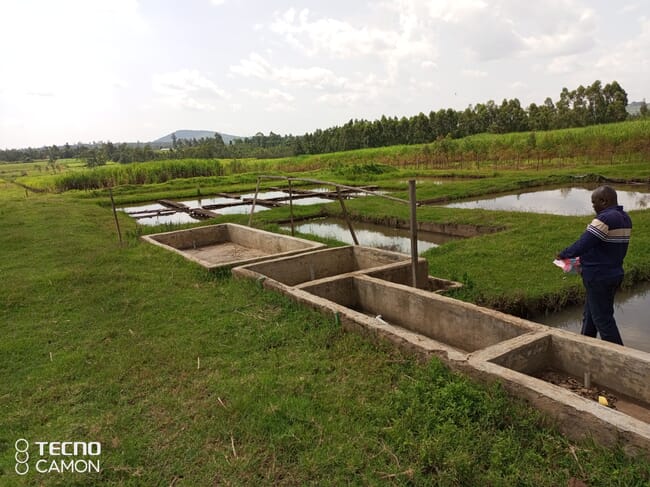
The ponds cover more than 14 acres: Kings Beta has a total of 22 big ponds, out of which, 12 are used to rear tilapia and the remaining 10 are for catfish
How can these be overcome?
We need investment partners to help us realise our full potential.
What achievement are you most proud of to date?
We’ve grown to become the biggest pond-based producer in the county and have hosted several county and national aquaculture events. We’ve also been certified by the Kenya Marine and Fisheries Research Institute (KEMRI) as one of the country’s best hatcheries, which allows us to produce the latest tilapia strains.
Kenya has had false dawns in the past in aquaculture – what can be learned from these past failures and do you think that the country’s sector will now see genuine sustainable growth?
Correct, proper legislation regulating the blue economy has now been put into place, imports have been regulated, and cages are now properly sited on our lakes.
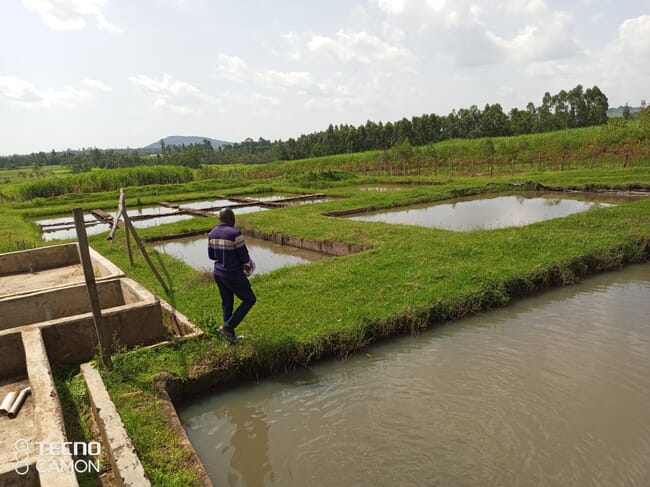
Amolloh wants to emulate Egyptian pond farming methods in Kenya and adopt modern farming technologies like aerators
What role can aquaculture play in feeding Kenya’s growing population?
It can earn foreign exchange, provide a key source of protein and be a vital source of employment… if developed correctly.
What’s your ultimate ambition in the sector?
Our main goal is to become Kenya’s biggest on-land fish producing company, before expanding into reservoirs and adopting contemporary production technologies. We want to take a leaf out of Egypt’s book as they have emerged as African’s biggest aquaculture producer, despite relying on pond production in a dry country.
In the future we will consider venturing into cage farming and use our current production site for juvenile production.


